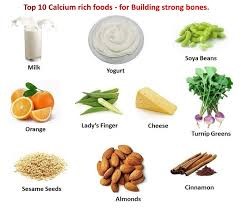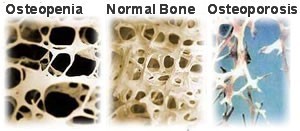Calcium is one of the important elements that our human body needs. It is essential for some physiological process in our body and calcium is important in building bones and teeth especially among growing children. Calcium absorbtion is facilitated by vitamin D3. Calcium intake without vitamin D3 will affect the absorption of calcium. Hence, many calcium supplements are incorporated with vitamin D3 to facilitate the calcium absorption in the body.
The essential amount of calcium needed according to the age group is listed in Table 1
|
Group
|
Age
|
Calcium intake
|
|---|---|---|
| Infants | 0 – 6 month | 200 mg/day |
| 7 – 12 month | 260 mg/day | |
| Children and teenagers | 1 – 3 year old | 700 mg/day |
| 4 – 8 year | 1000 mg/day | |
| 9 – 18 years | 1300 mg/day | |
| Adult | 19-50 years | 1000 mg/day |
| 51-70 years | 1000 mg/day | |
| 19-50 years | 1000 mg/day (men) | |
| 1200 mg/day (women) | ||
| Above 71 years | 1200 mg/day |
Table 1: Amount of calcium needed according to age group
Calcium deficiency
Calcium can be obtained naturally from diet and examples of food which are rich in calcium are shown in figure 1 below.
Figure 1: Example of food which are rich with calcium
Milk, cheese and some vegetables are good source of calcium. When the daily intake of calcium from diet is not sufficient, calcium supplement can be an alternative to source out the problem of calcium deficiency.
Symptoms of calcium deficiency (hypocalcaemia) includes numbness and twigging at finger, muscle stiffness, fits, tiredness, reduced appetite and irregular heartbeats [1]. In long term, reduced calcium intake or calcium deficiency can cause reduction of protein and mineral content of bone tissues (osteopenia) and eventually lead to brittle and fragile bones (osteoporosis). Figure 2 below shows the density of normal bones in comparison with osteopenia and osteoporosis conditions.
Figure 2: Differences normal bone, osteopenia and osteoporosis
Populations at high risk of calcium deficiency:
- Menopause women
Menopausal women are at risk of calcium deficiency because hormone estrogen is lack in this group of people. Estrogen hormone plays an important role in calcium absorption.
- Women without menses
Women without menses at their child bearing age are also at risk of calcium deficiency. This is because their imbalanced hormone can affect the calcium absorption to the blood.
- Milk lactose intolerance population
This population could not drink milk like normal people because they are intolerance to lactose, a type of sugar found in the milk. The consequence of lactose intolerance is they could not get the benefit of milk though milk is a good source of calcium.
Type of calcium supplement
There are several types of calcium compounds available in calcium supplements. Each compound contains varying amounts of the mineral calcium which is referred to as elemental calcium. Among the commonly used calcium supplements are:
- Calcium carbonate (40 percent elemental calcium)
- Calcium citrate (21 percent elemental calcium)
- Calcium lactate (13 percent elemental calcium)
- Calcium gluconate (9 percent elemental calcium)
Calcium element is the main consideration when choosing a suitable calcium supplement. This is because it is the actual amount of calcium that contain in the supplement varies according to the calcium compound of the products. The calcium element is what your body absorbs for bone growth and other health benefits but not the content stated on the supplement’s label. However, the supplement facts label on calcium supplements is helpful in determining how much calcium is in one serving. For example, if the supplement facts label stated one tablet of calcium carbonate contain 1 1250mg, the elemental calcium content in one tablet of calcium carbonate is only 500mg because calcium carbonate only comprises of 40% elemental calcium. Therefore, it is important to refer to the serving size (number of tablets) per day in order to determine how much actual calcium one takes in a day.
Calcium carbonate and calcium citrate are the two main forms of calcium supplements available. Calcium carbonate needs to be taken with food as the absorption is better when the stomach is slightly acidity [8]. Other forms of available calcium supplements are calcium gluconate, calcium lactate and calcium phosphate.
Side effects and calcium overdose
Side effects of calcium include constipation, flatulent and kidney stones. Excessive intake of calcium may cause calcium intoxication. Symptoms of calcium overdose are nausea, dry mouth, abdominal pain, irregular heartbeat, confusion, and even death. People with kidney disease, heart problems or bone tumors should not take calcium supplements unless it is advised by doctors. As a rule of thumb, always discuss with your doctor/pharmacist before you start to take any supplement including calcium especially if you have the above stated problems.
How to take and choose the right calcium supplement
There are different dosage forms of calcium, which include tablet, chewable tablet, liquid and powder. Calcium supplement in liquid, powder and chewable tablet are more ready for absorption due to its dosage form. The absorption of calcium is also better if a smaller dosage is taken for each serving, for example 500mg. Other than better absorption, side effects such as constipation and flatulent are much reduced if calcium is taken in a smaller dosage.
Choose a calcium supplement which has been registered with the Drug Control Authority (DCA). A registered supplement is assured with safety and quality while non-registered supplement might contain harmful heavy metals like lead and mercury. A registered calcium supplement should have a registered number which started with “MAL” followed by 8 digits and an alphabet “N” at the end of the 8 digits on the label. Such as: MAL99999999N. Furthermore, the supplement’s label should have a hologram with “DCA” wording /logo.
Interaction
Just like any other supplements Calcium will have an interaction if consumed together with other medicines. The absorption of some medicines like antibiotics (fluoroquinolone and tetracyclines), thyroid hormone (levothyroxine) and epilepsy medicines (phenytoin) can be reduced if taken together with calcium.
On the other hand, the absorption of calcium can be affected if taken together with steroid, such as prednisolone. Hydrochlorothiazide, which is prescribed for hypertension can interact with calcium and cause increased calcium level in the body and urine.
References
- Weaver CM, Heaney RP. Calcium. In: Shils ME, Shike M, Ross AC, Caballero B, Cousins J. Modern Nutrition in Health and Disease. 10th Ed. Baltimore, MD: Lippincott Williams & Wilkins, 2006:194-210.
- Heaney RP, Recker RR Stogman MR, Moy AJ. Calcium absorptpion in womwn: relationships to calcium intake, estrogen status and age. J Bone Minor Res 1989;4:469-75.
- Breslau NA. Calcium, estogen and progestin in the treatment of osteoporosis. Rheum Dis Clin North Am 1994;20:691-716
- Gallagher C, Riggs BL, Deluca HF. Effect of estrogen on calcium absorption and serum vitamin D metabolites in postmenopausal osteoporosis. J Clin Endocrinal Metab 1980;51:1359-64.
- Committee to Review Dietary Reference Intakes for Vitamin D and Calcium, Food and Nutrition Board, Institute of Medicine. Dietary Reference Intakes for Calcium and Vitamin D. Washington, DC. National Academy Press, 2010.
- Suchy FJ, Brannon PM, Carpenter TO, Fernandez JR, Gilsanz V, Gould JB, Hall K, Hui SL, Lupton J, Mennella J, Miller NJ, Osganian SK, Sellmeyer DE, Wolf MA. NIH Consens State Sci Statements. 2010 Feb 22-24; 27(2):1-27.
- Johnson AO, Semenya JG, Buchowski MS, Enwonwu CO, Scrimshaw NS. Correlation of lactose maldigestion, lactose intolerance and milk intolerance. Am J Clin Nutr 1993; 57:399-401.
- Straub DA. Calcium supplementation in clinical practice: a review of forms, doses and indications. Nutr Clin Pract. 2007;22:286-96.
- www.ods.od.nih.gov/factsheet/calcium-HealthProfessional
| Last Reviewed | : | 08 September 2016 |
| Writer | : | Wang Khee Ing |
| Accreditor | : | Azrina bt. Hassan |









